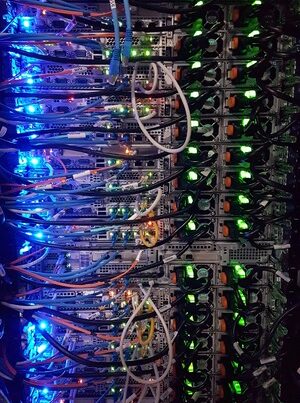What is hybrid procurement? It is an extension of elastic procurement™.
We’ve written about elastic procurement™ here:
Elastic procurement™ is a delivery model that is to Big Procurement technology systems what cloud computing was to the corporate data center. It lowers costs, eliminates complexity, and empowers staff.
What does this mean?
Most companies don’t use procurement technology from one of the large incumbent vendors. They’re expensive to carry with large fixed costs. They’re difficult to use.
They are over-featured.
“Developing new products and services beyond what is required by the needs of users, market demand and the resources of companies ranks among the top 10 risks leading to new product development (NPD) failures.“
Too many companies use email and spreadsheets to run the purchasing process, whether it is a full-blown reverse auction like an RFP or RFQ or it’s a catalog purchase for a lower dollar-value item.
By analogy, before cloud computing, companies would maintain large, expensive data centers with sufficient capacity to match peak demand. These were wildly under-utilized, even as they occupied expensive real estate and required large in-house staff to support their operation.
After cloud computing, companies (particularly smaller ones) moved out of the private data center and into the public cloud operated by companies like Amazon Web Services.
This enabled the nimble movers to match capacity to demand flexibly, paying only for what they used, when they used it.
Elastic procurement™ aims to do the same thing; provide a core set of necessary features to generate real competition on price and solution with a set of tools that one can spin up when needed and turn off when dormant, paying for utilization not for capacity.
Hybrid computing is defined as:
“Hybrid computing refers to a mixed computing, storage, and services environment made up of on-premises infrastructure, private cloud services, and a public cloud – such as Amazon Web Services or Microsoft Azure – with orchestration among the various platforms.”
For all the benefits of the public cloud (flexible scale, reduced capital expenditure, greater availability), there is the tradeoff of higher operating expense and less control over data security. With the public cloud, you have outsourced security in a sense, although you are still responsible for the correct configuration of your instance in what the vendors call a “joint security” model.
The private data center offers greater control, potentially higher security, and the potential for highly specific customization.
For larger organizations, some applications or some data may require enhanced security because it’s too sensitive to risk a leak via a public cloud instance. Or there are applications that might be difficult to transition to a cloud. Whereas things that relate to digital transformation of business processes or the introduction of new business processes may be well-suited for the agility of the public cloud, especially as they are being introduced.
In the case of an ERP system, one could imagine a context in which the ERP was the single source of truth or database of record, but the applications that interacted with the data were located in the public cloud. This enables using best-of-breed cloud-based functional applications as opposed to modules that promise (but may fail to deliver) integration that is increasingly available with an application programming interface.
When organizations want to run both private data centers and public cloud instances in parallel, with cross-stitching to ensure that they work well within an enterprise IT context, this is called hybrid computing.
Hybrid procurement then is the analog to hybrid computing.
There may be aspects of the procurement process that companies want to run in-house, even as they are prepared to run other aspects of purchasing using a public cloud-served web application.
There is a constant tug-of-war between the forces that would centralize procurement and those who would decentralize it. We wrote about this dynamic here.
It’s possible, for example, to reconcile this gap with a hybrid procurement model.
The forces driving centralization of procurement aim for compliance with enterprise procedures designed to mitigate “waste, fraud, and abuse.” But the entropy in which decentralized elements, such as IT, want to control their own purchasing activity, frustrated by the perceived (or actual) bureaucracy of the procurement process, argues for at least a hybrid approach to procurement.
Hybrid procurement combines nimble, decentralized purchasing with centralized compliance and oversight in a way that optimizes for value and efficiency in transaction.
This is what we have built with EdgeworthBox. We call it elastic procurement™. Buyers and suppliers get access to tools, data, and community, with an unlimited number of seats for free. We charge when there’s a procurement event or for additional value-added tools.
We’d love to talk with you about it. Feel free to reach out.




